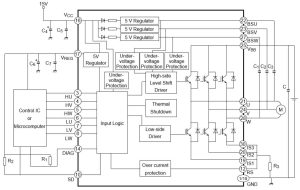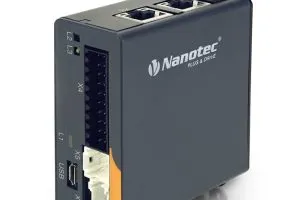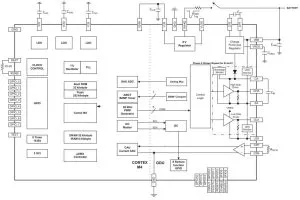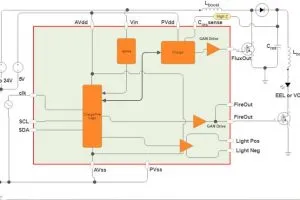 Toshiba is aiming at air conditioners, air purifiers and pumps with an IGBT-based brush-less dc motor driver, suitable for sine-wave generation, in a ~13 x 33mm through-hole HDIP30 package.
Toshiba is aiming at air conditioners, air purifiers and pumps with an IGBT-based brush-less dc motor driver, suitable for sine-wave generation, in a ~13 x 33mm through-hole HDIP30 package.
TPD4165K, as it will be know, can handle a maximum output of 3A, compared with 2A for the company’s earlier TPD4163K or TPD4164K.
Absolute maximum input voltage has been raised to 600V “to enhance long-term reliability”, said the company, compared to its existing TPD4123K, TPD4123AK, TPD4144K, TPD4144AK, TPD4135K or TPD4135AK.
Recommended operation is over 50 to 450Vdc (280V nominal), and the device also needs a separate 13.5 to 16.5Vdc (15V nominal).
The HDIP30 package is smaller than a standard DIP26 package, and uses a 1.778mm (0.07in) pin pitch, rather than the typical DIP pitch of 2.54mm (0.1in). Nominal dimensions are 32.8 x 13.5 x 3.525mm.
Electrically, it has a six IGBT three-phase bridge with support for three-shunt or single-shunt current sensing. The bridge includes six anti-parallel fast diodes.
Output transistors typically saturate to 2.6V (3.3Vmax) at 1.5A. Resulting heat need to be extracted through the package’s top-mounted heat pad.
A logic ‘low’ in the SD input will shut the output stage down.
Protections include over-current, under-voltage and thermal shut-down, with an output pin (DIAG) to indicate safety status.
“Designers can freely access a design for a sensorless BLDC motor drive circuit based upon the TPD4165K and Toshiba’s TMPM374FWUG microcontroller with vector control capability,” according to the company.
Find the TPD4165K product web page here
 Electronics Weekly
Electronics Weekly



